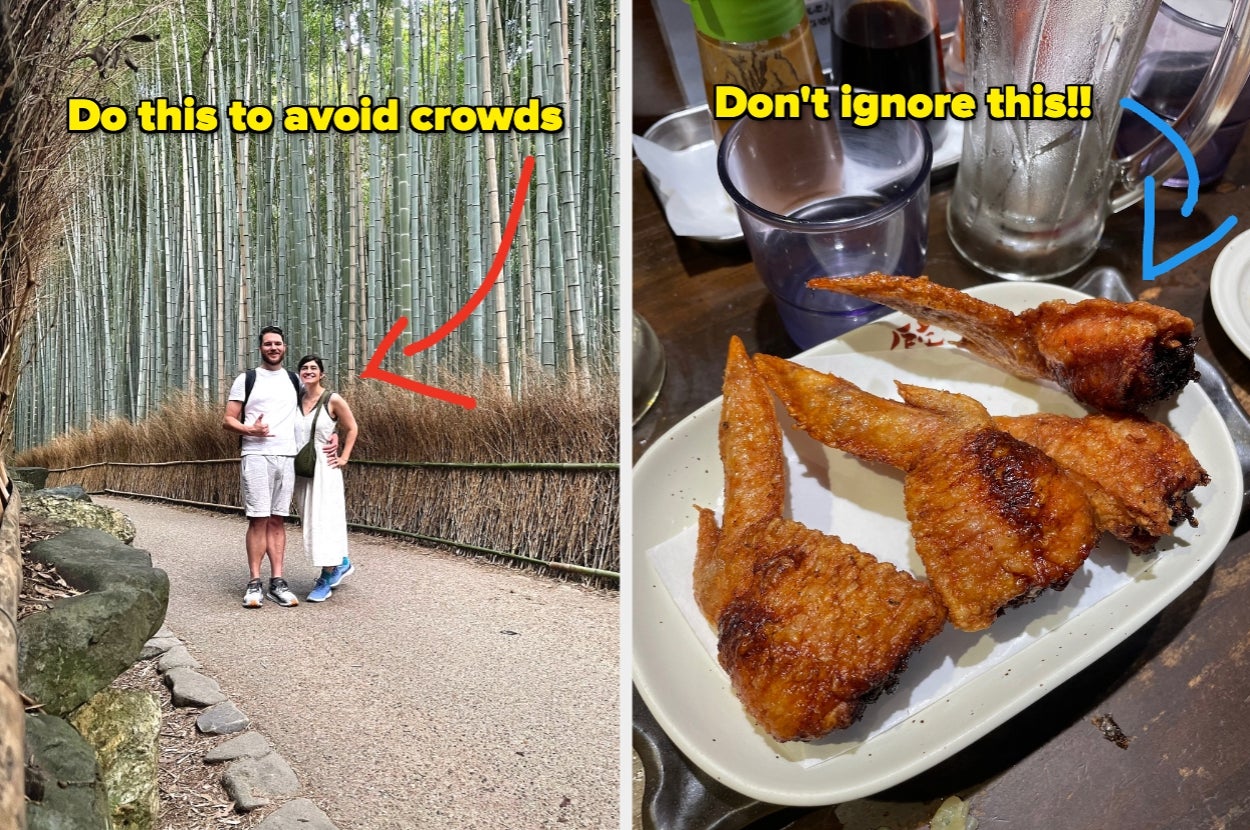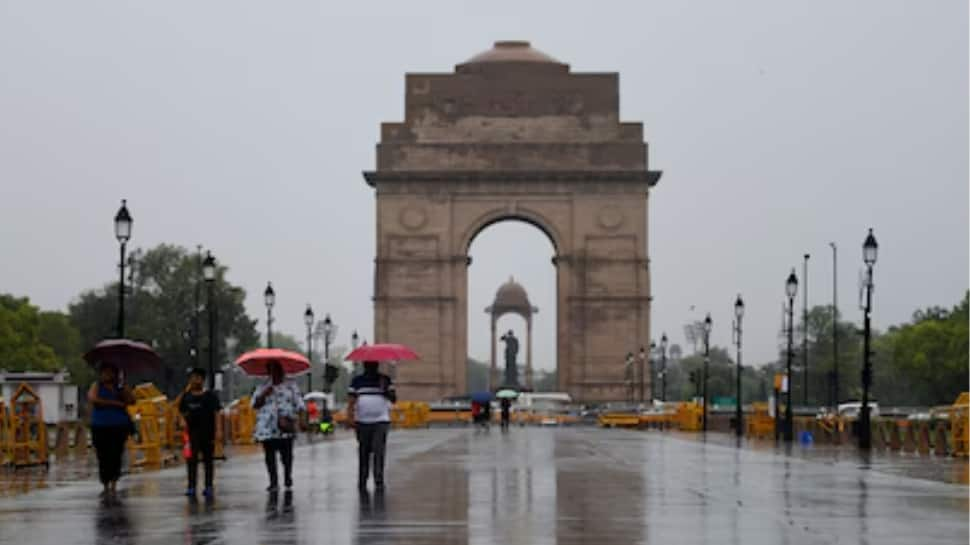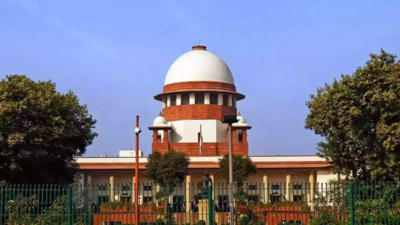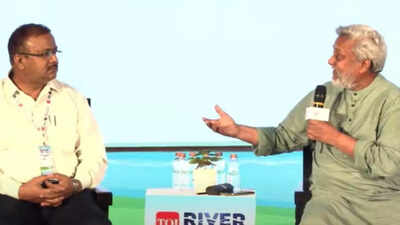Hi, my name is Raven, and my husband and I went to Japan for the first time for our honeymoon a couple of years ago. For two weeks, we went to Tokyo, Osaka, and Kyoto, and it was an incredible experience we'll never forget. While each city has its own vibes and rhythms in terms of how it does things, there was something really special about Kyoto.
Between visiting shrines and temples, exploring the quiet neighborhoods, and being surrounded by nature at every corner, it was hard to leave after our three and a half day stay. But even though we truly enjoyed our stay, it took a lot of planning and researching to make the most out of Kyoto. And since a lot of people are planning to visit this historic city this year because it's trending online and the yen is still low , I thought it would be helpful to share the biggest mistakes you should avoid when visiting Kyoto, like booking hotels in this one area or only using this one form of transportation to get around — plus, some things you should totally keep in mind that I hope will be helpful for you! While there are general Japan travel mistakes you want to avoid, like not carrying cash, eating and drinking while walking, and tipping at restaurants, the following mistakes are geared specifically for Kyoto.

So don't be afraid to share any mistakes you think people should avoid like the plague, in the comments below! 1. First things first: Kyoto is not for sleepy heads. If you want to make the most out of this over 1,000-year-old city, I highly recommend waking up early, like really early, to avoid the crowds when exploring the most popular shrines and temples.
Even though Kyoto has over 1600 Buddhist temples and 400 Shinto shrines, tourists will flock to the most popular ones — like Kiyomizu-dera Temple , Fushimi Inari Shrine , and Arashiyama Bamboo Forest — as early as 9 a.m. (yeah, that's not a typo).
So, my tip? Wake up anywhere between 5-6 a.m., grab breakfast at one of the konbinis ( Japanese convenience stores ), and head over to your destination by 7:00-8 a.
m. For instance, when my husband and I visited the Bamboo Forest in Arashiyama around 7 a.m.
, we had over an hour of relaxing time by ourselves before the crowds started to show up (and trust me, it was a night and day difference in volume). A lot of the most popular shrines and temples are actually open 24/7, so the fact that you can technically go whenever you want is a true luxury. A thing to note: The only popular temples that actually have restricted time frames are the Kinkaku-ji Temple (aka the Golden Pavilion), which opens at 9 a.
m. and closes at 5 p.m.
, and Kiyomizu-dera Temple, which opens at 6 a.m. and closes depending on the season.
When planning, just double-check which places are not open 24/7, so you don't miss out. Another thing to note: If you head to these places early, be mindful that many local shops or restaurants won't be open until around 10 or 11 a.m.
(which is really common in Japan). So, definitely bring some extra snacks to hold you over until then. 2.
Next, don't make the mistake of not planning ahead. Yes, you can definitely visit Kyoto on a whim and see things at your own leisure, but if you want to explore anything and everything that Kyoto has to offer, I strongly suggest whipping out a map and structuring each day to focus on a certain region of Kyoto — if not, your trip may become incredibly overwhelming because there is simply so much to do. The good news is that Kyoto can be broken up into five sections: Northern, Southern, Eastern, Western, and Central, with a few shrines and temples located in each of these areas.
I recommend combining some of these sections into a three- or four-day trip. As an example: A three-day trip can involve the Southern and half of the Eastern areas on day one, the Western and parts of the Northern areas on day two, and the central and half of the Eastern areas on day three. My husband and I skipped the northern part altogether, and our days were still booked and busy for our three and a half day stay, especially between taking naps, eating food, and shopping.
3. However, this is why I strongly discourage trying to fit Kyoto in two days. This is a major mistake I see a lot of people making when planning their overall Japan trip, and unless you want to be utterly exhausted by the end of your Kyoto stay, I would avoid doing this at all costs.
Instead, schedule a minimum of three days (although four days is best) to get the most out of this city. This will give you enough time to explore and enjoy all of the sights and food without having to rush. 4.
Actually, another mistake a lot of people make is ignoring all the delicious food options and just focusing on the tourist attractions. To quote the Julia Roberts: "Big mistake, big, huge!" Why? Because Kyoto has a lot to offer when it comes to restaurants, coffee, and snacks. Yes, you can live off of the delicious konbini foods from either Family Mart or 7-Eleven (which are so, so good), but you can find those places anywhere in Japan! Here are just a few places I think you should check out! Coffee: • Weekenders Coffee Roastery • School Bus Coffee Stop • % ARABICA • WIFE & HUSBAND • Goodman Roaster Kyoto Restaurants: • Kacto • Omen • Chao Chao Sanjo Kiyamachi • Men-ya Inoichi Hanare Food-Focused Tourist Areas: • Nishiki Market • Pontocho A thing to note: Try not to use Google Maps to find restaurants or look up reviews.
Instead, a lot of people have found success with Tabelog , which is similar to Open Table or Yelp. Another thing to note: I wouldn't try to find a restaurant when you're starving, as waiting in line for food is pretty common in Japan. Either A) schedule a reservation ahead of time to guarantee a spot, or B) leave earlier than you think you should to find some great spots.
Usually, lines begin an hour before restaurants even open, so bring snacks with you to avoid getting hangry. Small tip: If you do choose to walk around but you're not sure if a restaurant is open or not, keep an eye out for restaurants' norens (aka curtains hung in front of doorways). They are usually displayed out front if they are open.
5. A lot of people say that Kyoto's transportation system is not as good as Osaka's or Tokyo's — and, even though there is a small truth to this, I disagree with the common tip of sticking to the bus system or, if you have the funds, taking a taxi to certain places. The only reason people are suggesting this is because a bus or taxi will drop you off right in front of the tourist attraction.
While this can be helpful, I suggest taking the subway to wherever you want to go and walking the remainder of the way, if you really want to make the most of Kyoto (and if you're physically able to do so). This tip might seem like a burden or an annoyance to some individuals; however, Kyoto is a beautiful, nature-centric city that should be explored on foot. Even though sidewalks are scarce in most areas, it's common to walk on the side against the buildings while letting the cars drive by (trust me, you'll feel safe because no one is driving a million miles per hour).
The thing is, the greatest gems you'll find will be down alleyways or small corners that can only be found on foot. A thing to note: Taxis are extremely expensive in Japan, and Uber is not available in the country either. So, use this form of transportation cautiously if you want your Japan trip to be more budget-friendly.
6. Your feet will be barking if you reserve a hotel that is far from the attractions. Yes, a hotel may be cheaper if you find one on the Western side of Kyoto, where a lot is not going on; however, proximity is key if you don't want to collapse by the end of the day.
Something to remember: You'll easily be doing twenty thousand steps a day during your Japan trip, so consider how you want to feel at the end of the day when heading back to your hotel. So, where should you stay in Kyoto? My first tip is to whip out that map of Kyoto again, pick the top attractions you absolutely don't want to miss, and reserve a hotel close to them. For instance, while my husband and I wanted to explore the Bamboo Forest on the West side of Kyoto, there were way more shrines and temples on the East side.
So, we figured it would make the most sense for us to pick a hotel — BnA Alter Museum — in Downtown Kyoto by the Kamo River, which is at the edge of the city center. It took us an hour by subway to get to the Bamboo Forest, but it only took us about 20 minutes on foot to get to other destinations. However, if you want to get the most out of the Kyoto experience, a lot of people suggest staying in southern Higashiyama , where Gion , which is the Geisha District and a lot of traditional, Edo-period housing, is located.
Small Tip: If you want to stay in a ryokan , which is a traditional Japanese inn, make sure you book this months in advance. These reservations go very quickly, especially in Kyoto. This is the one mistake we regret making.
7. Talking about Gion, avoid taking photos of Geishas unless you want to receive a 10,000 yen fine (which is about $70). Geishas (known as geiko in Japan) are protected in Kyoto, and the only way you can take pictures of them outside is if you have a permit .
Unfortunately, a lot of tourists have invaded the Geishas' personal space and private properties lately, even though there are signs in Gion instructing visitors to refrain from taking photos. A thing to note: If you want to take pictures of Geishas, consider booking a tea-ceremony experience with them . While a lot of people may think it's okay to simply go up and ask to take a picture, Geishas are most likely already on the clock, heading to appointments.
People have been called out for rude, paparazzi-like behavior, so just remember to be kind and respectful when exploring this historic district. 8. Another thing to keep in mind is that Kyoto is definitely the quietest of the three popular cities (Osaka, Kyoto, and Tokyo) that tourists visit in Japan, so I would avoid being loud if possible.
While there are more lively areas in Osaka and Tokyo to "let loose" (like Dotonbori and Shinjuku ), Kyoto is an ancient city known for its shrines, temples, and heritage, which is why life feels "slower" and more serene there. Seriously, take a stroll anywhere in the city center, and you could probably hear a pin drop. The only times it will get loud are when you head to some of the major tourist destinations, especially Nishiki Market (a famous food hall) and Sannenzaka (a temple and shopping area), because of the sheer volume of people you will be surrounded by.
A thing to note: if you truly hate walking close to strangers, I would just explore Kyoto's local areas, like its city center or downtown, since a lot of the major tourist attractions are in the outer areas of Kyoto (minus Nishiki Market). However, if you prefer noise, definitely visit Izakayas for a "pub-like" vibe. 9.
When it comes to the shrine and temples, don't treat them like a regular tourist attraction — after all, these are religious sites. A lot of people make the mistake of just walking into these areas and doing whatever they please without considering why these buildings were built in the first place. So, before you enter a shrine or temple, I recommend following the etiquette tips below: Shrines: • Try not to walk directly through the center path under the torii (main gate), as that is only for the shrine god.
• Make sure to "clean" your hands and mouth from the purification fountain. There is a certain way to do this, which you can find here . • Say a prayer in front of the honden (main hall), or throw a coin in the offering box, and ring the bell.
You can find the full step-by-step guide here . You can also buy amulets, fortunes, and goshuin (stamps) to take home with you for luck. Temples: The rules are pretty similar to shrines, except they might not be as strict, or you may just have to perform rituals in a different sequence (for instance, temples usually include incense to burn for Buddha).
Just make sure you're wearing socks when visiting temples, as you may have to take your shoes off before entering. We had to do this for a certain section at the Kiyomizu-dera Temple . 10.
A lot of people only explore Kyoto, yet there are so many cute smaller cities nearby! Yes, while your time there may be packed with things to do, you may be able to take a 30-minute train to either Uji (which is known for its matcha!) or an hour train to Nara (aka deer city), especially if you decide to add on a half or full fourth day! A lot of these places nearby can be done in half a day, so a little tip is to head over for a few hours during the day and then take the train back to Kyoto to grab some dinner. While my husband and I stayed in Kyoto the whole time we were there, we definitely plan on taking a day trip to one of these places the next time we (hopefully) will head back to Japan. 11.
And finally, the last mistake you don't want to make when visiting Kyoto is actually going to Kyoto if you don't care for shrines, temples, or crowds. Although I can go on and on about this city and why I believe people should visit, Kyoto is not for everyone, and that is okay! Like I've mentioned before, Kyoto is pretty different from Tokyo and Osaka: It's quieter, more nature-focused, filled with shrines and temples, and tourist-heavy. If there's one thing I didn't like about Kyoto, it's that some historic regions sometimes felt like you were walking in an "amusement park" version of them because of how crowded it was, which took away from the traditional values and architecture that you were surrounded by.
While I absolutely don't regret visiting this amazing and beautiful city, I do wish overtourism wasn't a huge problem here. A small tip: Try to minimize going to the popular Instagram or TikTok-loved restaurants or shops here, and instead, walk around the city to find local spots you can find on your own if you're looking for a more authentic experience. Even though I am a firm believer in doing the touristy things when you first visit a place, it's also a good idea to balance these things with spots that aren't as "hyped" on social media — they deserve just as much love.
Have you ever been to Kyoto, Japan? We want to hear all the tips someone should keep in mind for their trip, either in the anonymous Google form or in the comments below..
Food

11 Mistakes You Want To Avoid At All Costs While Visiting This Popular And Historic Japanese City

There's one common tip that I highly disagree with that I think you should avoid at all costs.View Entire Post ›















